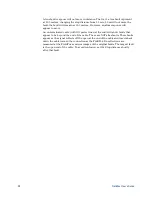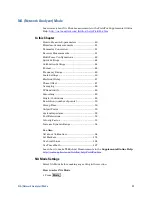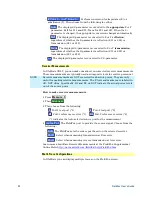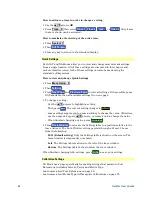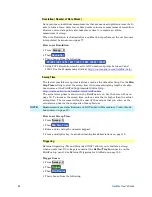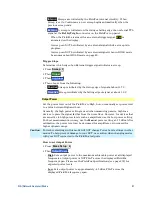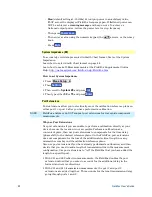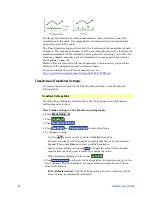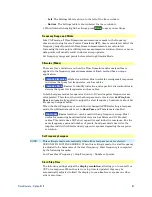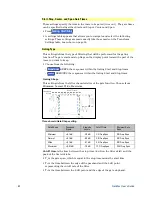
48
FieldFox User’s Guide
Then
More
Then
Phase Offset
Enter a value in degrees using the numeric keypad, the
▲|▼
arrows, or the
rotary knob. Press
Enter
Averaging
Averaging helps to reduce the effects of random noise on a measurement. You
specify the number of measurements to be averaged. The more measurements
averaged, the greater the amount of noise reduction. An average counter is
shown in the left edge of the screen as
Avg <n>
where <n> is the number of
measurements that are averaged.
Averaging can be set before or after calibration. When set before calibration,
each calibration standard is measured <n> times and averaged. More time is
needed to perform the calibration, but there will be less noise in the resulting
error terms which means that subsequent measurements will also have less
noise. In addition, noise is further reduced by continuing to average after
calibration.
How to set Averaging
Press
BW 2
.
Then
Average <n>
where <n> is the number of measurements to average.
Enter a value using the numeric keypad. Enter
1
for NO averaging.
Press
Enter
.
Then
Average Mode
Choose from the following:
o
Sweep
- Each data point is based on the average of the same data point
being measured over <n> consecutive sweeps. The average counter shows
the number of previous sweeps that have been averaged together to form the
current trace. When the counter reaches the specified count, then a ‘running
average’ of the last <n>
sweeps is displayed.
o
Point
- Each data point is measured <n> times and averaged before going to
the next data point. On subsequent sweeps, averaging restarts by measuring
each data point again <n> times. The average counter is not updated because
data is not displayed until all the averages have been applied.
o
Point averaging is usually faster than sweep averaging
. However, you may
need to increase the Point Average count to obtain the same level of noise
reduction as with sweep averaging.
While averaging is in process, press
Sweep 3
then
Restart
to restart the
averaging at 1.
IF Bandwidth
The FieldFox converts the received signal from its source to a lower intermediate
frequency (IF). The bandwidth of the IF bandpass filter is adjustable. Reducing
the IF receiver bandwidth reduces the effect of random noise on a measurement.
However, narrower IF bandwidths cause longer sweep times.





